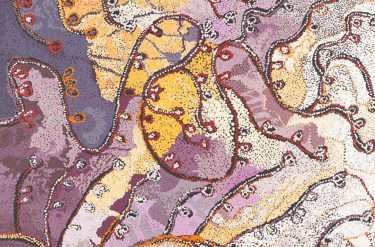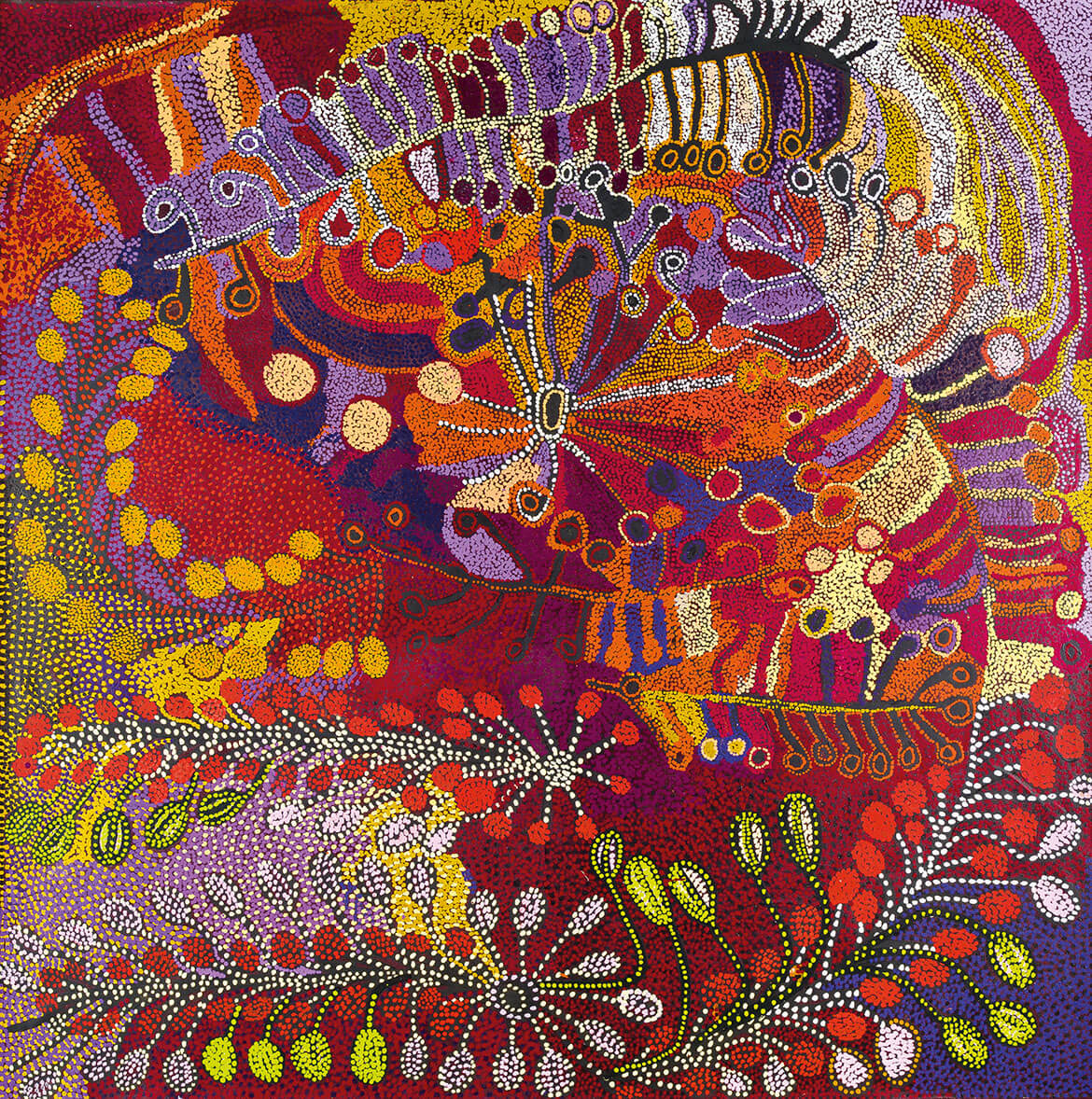
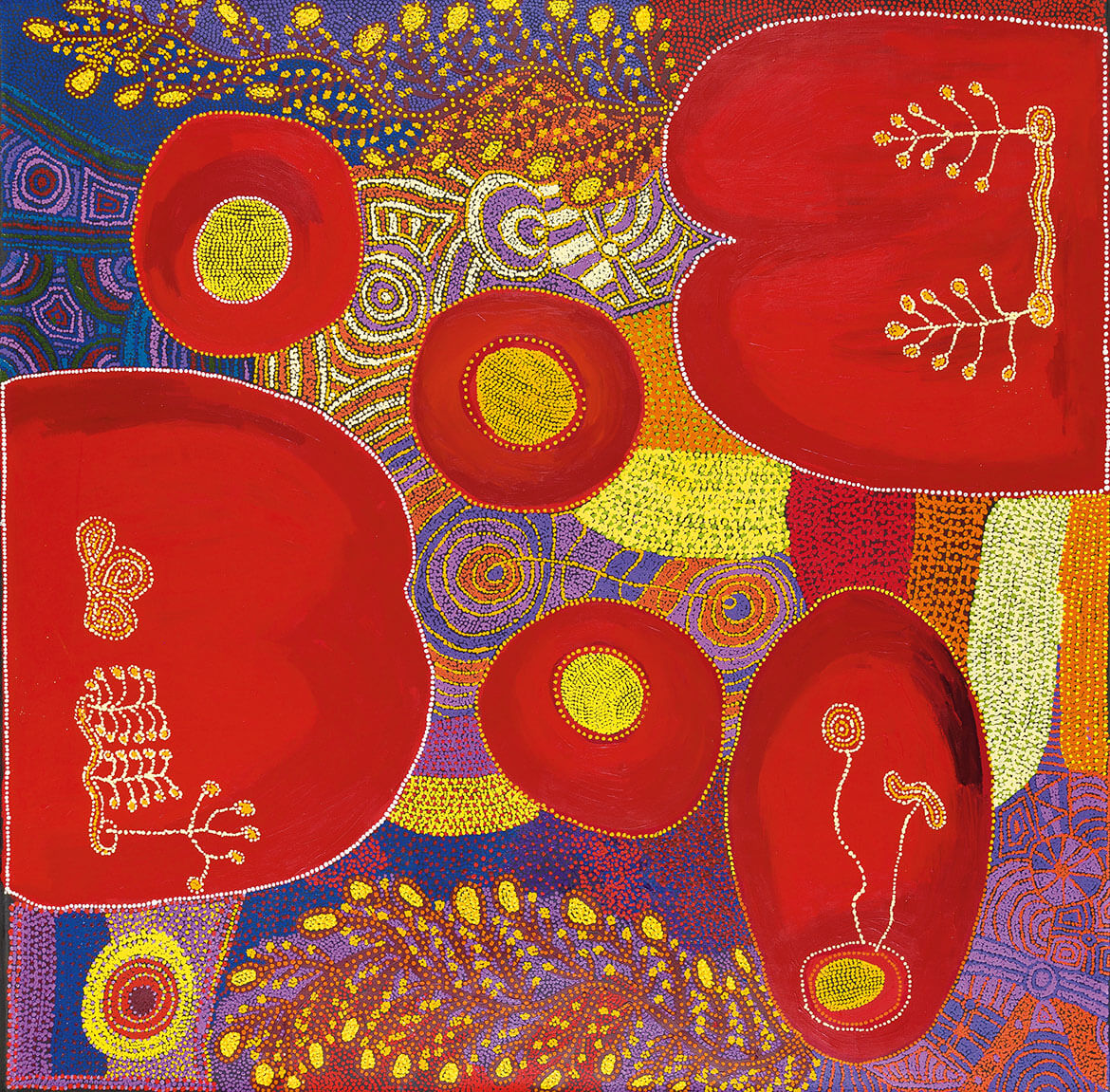
Inspired by the Gallery’s commission to paint for ‘the special place’ (the Gallery) the women of the Amata Community in the north-west of South Australia have excelled themselves with a remarkable group of seven paintings and consider these large-scale works to be their best ever.
I visited Amata in February 2012. To get there we travelled from Yulara along the red dirt road that skirts the base of Uluru; overwhelmingly massive and dramatically beautiful. The road continues through relatively flat lands dotted with rounded clumps of spinifex, sparse desert oaks and soft grasses ─ a palette of sage and silver contrasting with the rich orange/red of the earth. Evening shadows added deep purples, greens, rust and black to the dark blue of the sky. This is no drab desert country.
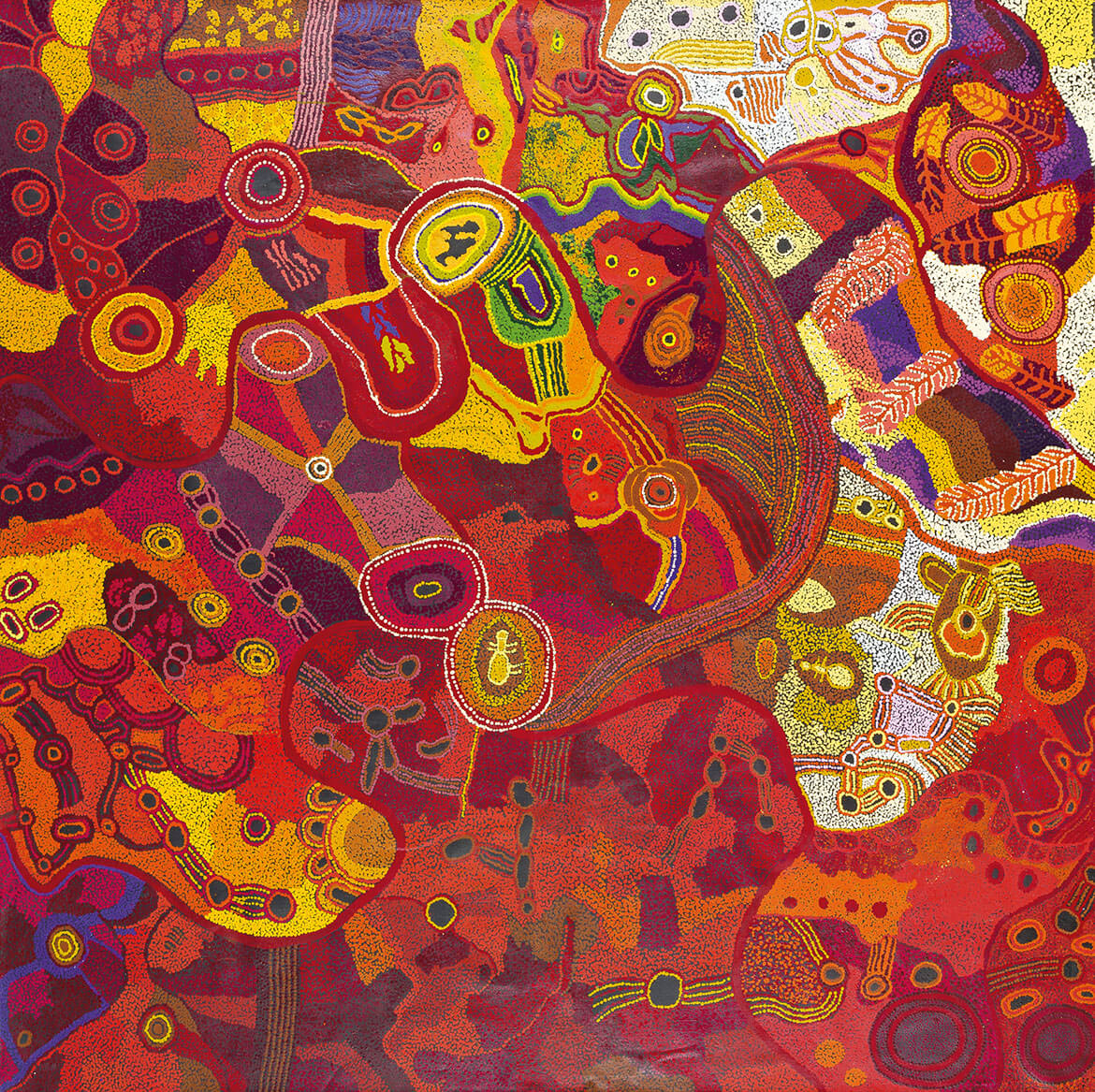
What a thrill it was to finally meet the artists and to be greeted with the beaming smiles, filled with humour, wisdom, intelligence and warmth of Tjampawa Katie Kawiny, Wawiriya Burton, Ruby Williamson, Tjungkara Ken, Mary Katatjuka Pam, Katanari Tjilya and others. And to see where they worked in the purpose-built Tjala Arts studio where they sat comfortably on the floor with their stretched canvasses and brilliant paints in their colour of choice. Largely silent as they painted, the predominant sound was of paint-loaded brushes on canvas. I could see that the women’s paintings reflected the rich colours and textures of their environment.
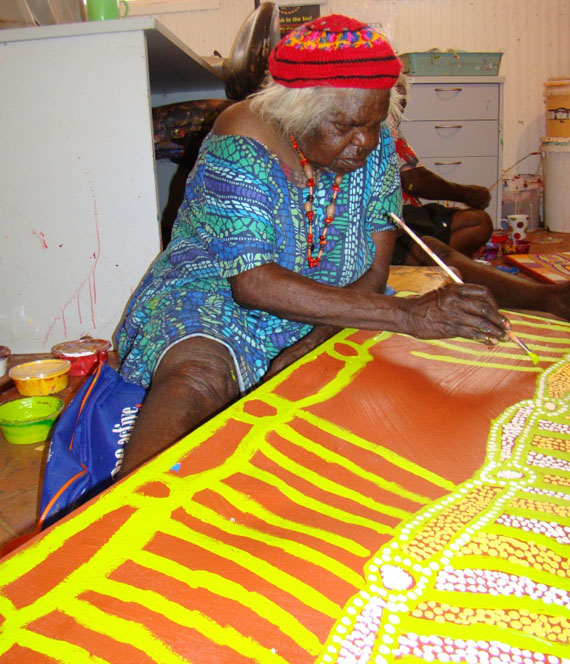
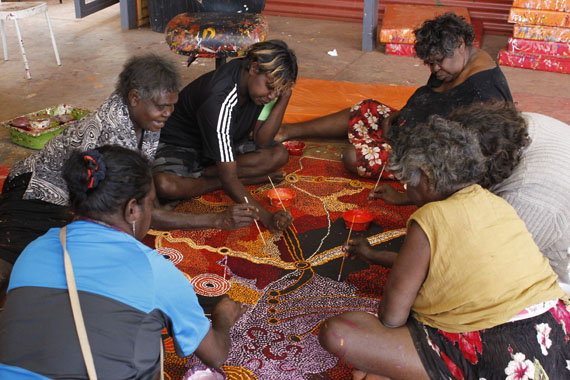
A unique aspect of the project is the collaboration between senior artists, their daughters and grandchildren, a way of learning that is very important to Amata people. In fact altogether 18 women were involved in painting these works.
Through this project QAGOMA has forged an enduring relationship with the Amata artists. They know where this collection of their works is held and that they will be viewed and appreciated by the public and also be accessible to their Anangu families for generations to come.

READ ABOUT YOUR AUSTRALIAN COLLECTION / watch videos on indigenous australian art
Diane Moon is Curator, Indigenous Fibre Art, QAGOMA

